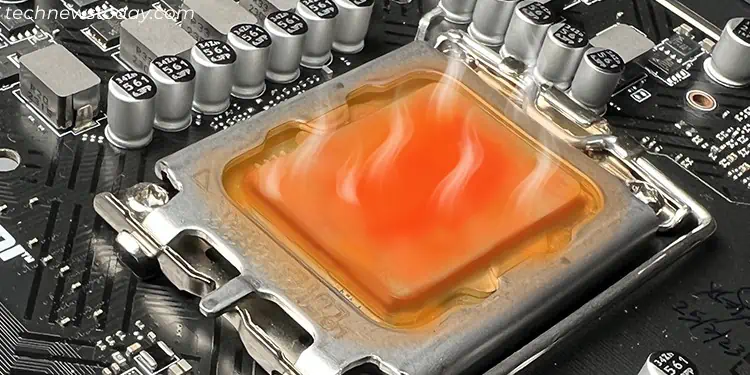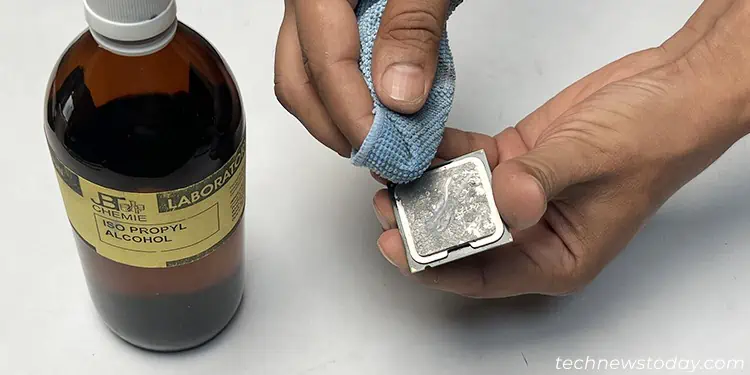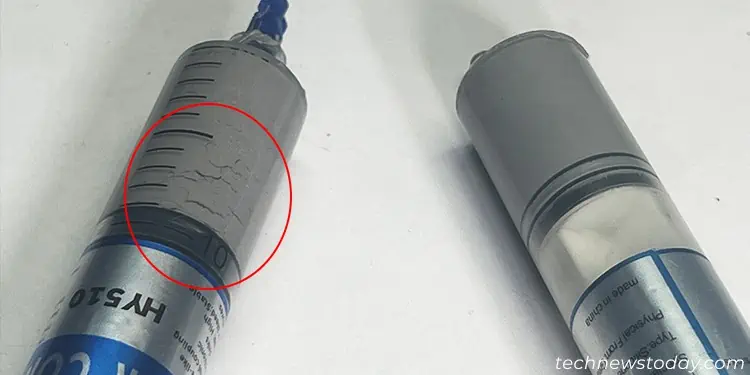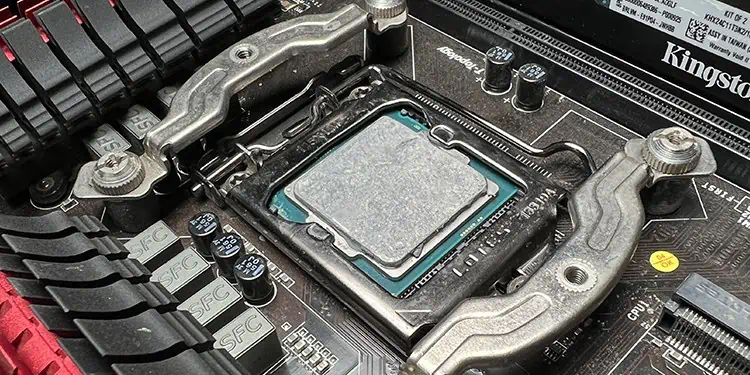Thermal paste is not designed to dry out quickly as it needs to remain viscous and get spread over the entire CPU. This helps fill any microscopic gaps to maintain an effective heat-exchange system.
However, over time, it eventually dries out due to its composition and constant cycles of exposure to high heat.
Standard thermal paste lasts about 2-5 years, and high-quality ones can support your CPU for a few more years. Cheaper, low-quality pastes, meanwhile, will only give you at most a couple of years of good performance, after which the paste will start to dry.
Even before completely drying, the paste can start deteriorating with time. So I usually replace the thermal paste on my PC after 2-3 years so that it doesn’t completely dry out and affect the CPU.
How Long Does Thermal Paste Take to Dry on a CPU?
Most thermal paste uses organic solvents to mix all of its components and have them in a fluid or pasty state. These solvents evaporate with time, especially due to constant heat cycles from running your PC, and cause the paste to become dry.
Thermal pastes that use non-organic solvents are also available in the market. But they just prolong the rate of solvent evaporation and can’t entirely negate it.
The rate at which such a process occurs depends on many factors, such as:
- The thermal paste’s quality and type (silicon-based, metal-based, carbon-based, etc.).
- Your normal workload on the computer— a higher workload or any overclocking will reduce the paste’s lifespan.
- Quality of the heatsink— If the heatsink itself does not dissipate heat as quickly, the excess heat trapped in the pate will cause it to dry out much quicker.
- Ambient temperature of the computer’s location.
- Accumulation of dust keeps the heat trapped inside the PC and increases its temperature.
Due to all these factors, most thermal pastes will dry out after 2-5 years of use. Higher quality ones, especially those that have non-organic solvents, will last 6+ years, depending on your usage and placement.
What Happens When Thermal Paste Dries Out?
The purpose of thermal paste is to fill in any gaps between the CPU’s IHS (lid) and the metal surface of the CPU cooler. While it is not as good a thermal conductor as metal, it is much better than air, and its fluid nature makes it a good interface for heat exchange.
When the paste dries out, it gets crumby, and you’ll usually see cracks in the dried compound, which creates more pockets of air between the CPU and the heat sink. Consequently, the heat can’t dissipate to the heat sink as effectively, and your CPU will start overheating.

Your CPU fan will also start compensating for the increase in the CPU temperature and run at full speed, causing a lot of noise.
How to Prevent Thermal Paste from Drying?
It is not possible to completely prevent thermal paste from drying. What you can do is prolong its lifespan by limiting all the factors that affect the rate of drying. For that,
- Use high-quality pastes whenever possible. It’s a best practice to clean the pre-installed paste on any stock coolers and replace it with a new one.
- Use a good quality CPU cooler and clean it regularly.
- Regularly clean your PC as well.
- Avoid overclocking your CPU/GPU when you don’t really need to.
- Keep the computer in a low-power state or shut it down when not in use.
- Keep your PC in a cool location with proper ventilation.
- Replace thermal paste every 2-3 years.
How to Clean Dried Thermal Paste?
If the thermal paste on your CPU or cooler has dried out, you need to clean it and reapply a new paste onto the CPU.
Cleaning dry thermal paste is not different than cleaning a fluid-state thermal paste. You need to wipe it with a lint-free cloth soaked in slight isopropyl alcohol in both the cases.

Make sure that the paste does not get to the circuit areas in the motherboard and let the isopropyl alcohol dry off properly before reapplying a new paste.
Also, make sure to use a suitable amount in a proper pattern so that the paste spreads over the CPU evenly.
Does Thermal Paste Dry Out in the Air or Tube?
It doesn’t dry out very quickly, but the drying rate rises significantly with the exposure to air as the solvent evaporates faster. So, it is always recommended to close the lid of any thermal paste tube after applying it.
But inside the tube is a different story altogether. A new thermal paste package usually has an expiration date of about 4-5 years. High-end pastes like Mx4 can have a shelf life of 8 years if kept sealed.
Once opened, as long as you store it in a cool location while covering the lid, the thermal paste will remain functional for two or more years within its expiration date.
High-quality pastes generally have a shelf life of 4 years after opening.
The rate of drying in this situation also depends on several factors like ambient temperature, storage location, and the quality of the paste.

However, it’s always better to test the consistency of the paste rather than relying on the expiration date. I have stored some thermal paste tubes for 10+ years, and many still worked fine afterwards.
If the paste is powdery or hard or you see cracks from outside the tube, don’t use it. If it has the consistency of a paste, it should be safe to use. Just make sure you replace the paste on your CPU a bit more often.
On a different note, the reason you need to clean the paste and reapply it after removing a CPU cooler is not that it dries in the air. It’s because reinstalling the cooler onto the old paste does not spread the paste properly.
